
The Rachel Carson or Ninth Street Bridge, Pittsburgh, seen from six floors up on Liberty Avenue.

The Rachel Carson or Ninth Street Bridge, Pittsburgh, seen from six floors up on Liberty Avenue.

At the corner of Seventh Avenue and William Penn Place is a complicated and confused nest of buildings that belonged to the Bell Telephone Company. They are the product of a series of constructions and expansions supervised by different architects. This is the biggest of the lot, currently the 25th-tallest skyscraper in Pittsburgh, counting the nearly completed FNB Financial Center in the list.
The group started with the original Telephone Building, designed by Frederick Osterling in Romanesque style. Behind that, and now visible only from a tiny narrow alley, is an addition, probably larger than the original building, designed by Alden & Harlow. Last came this building, which wraps around the other two in an L shape; it was built in 1923 and designed by James T. Windrim, Bell of Pennsylvania’s court architect at the time, and the probable designer of all those Renaissance-palace telephone exchanges you see in city neighborhoods. The style is straightforward classicism that looks back to the Beaux Arts skyscrapers of the previous generation and forward to the streamlined towers that would soon sprout nearby.
Hidden from most people’s view is a charming arcade along Strawberry Way behind the building.

Roadside blackberries just beginning to ripen in Robinson Township.
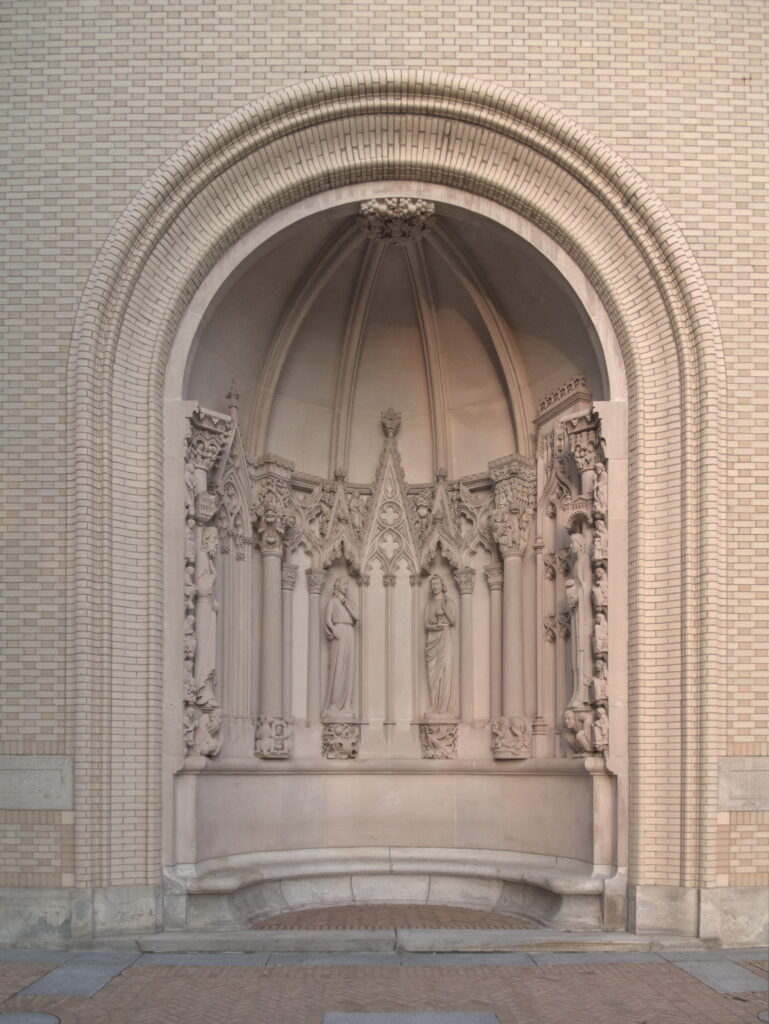
Henry Hornbostel designed the front of the Fine Arts Building with niches that display all styles of architectural decoration, and more practically give students a place to sit between classes. The niches have continued to accumulate sculpture in styles from all over the world. The whimsical figures in the Gothic niche may have been done by Achille Giammartini.
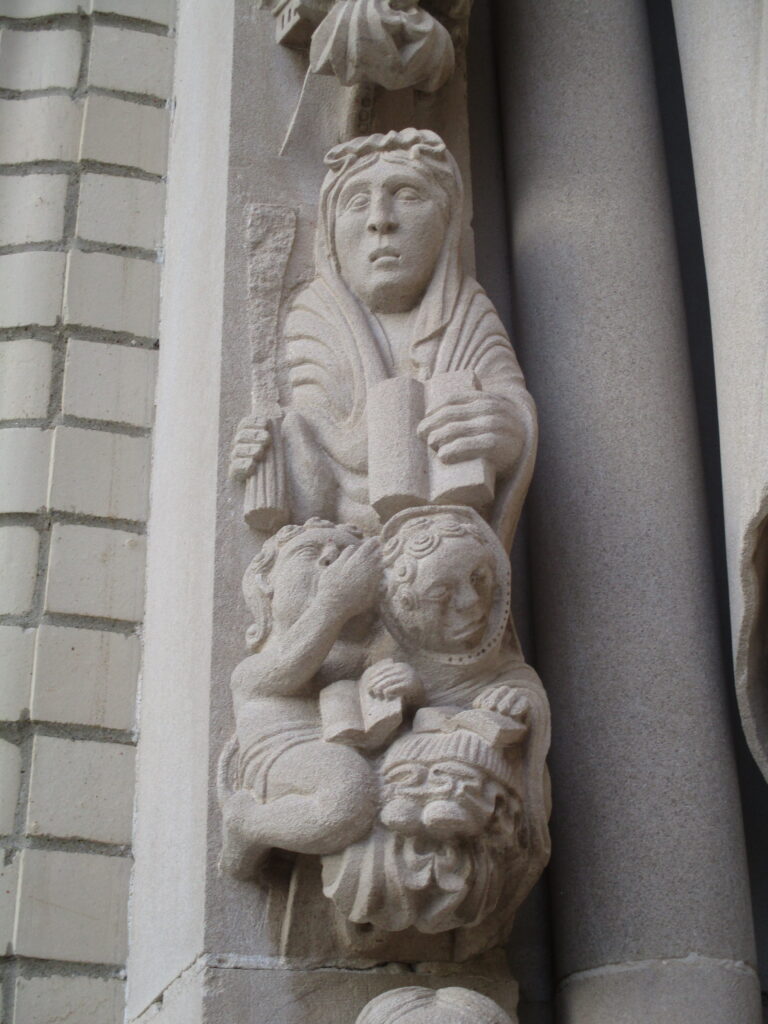
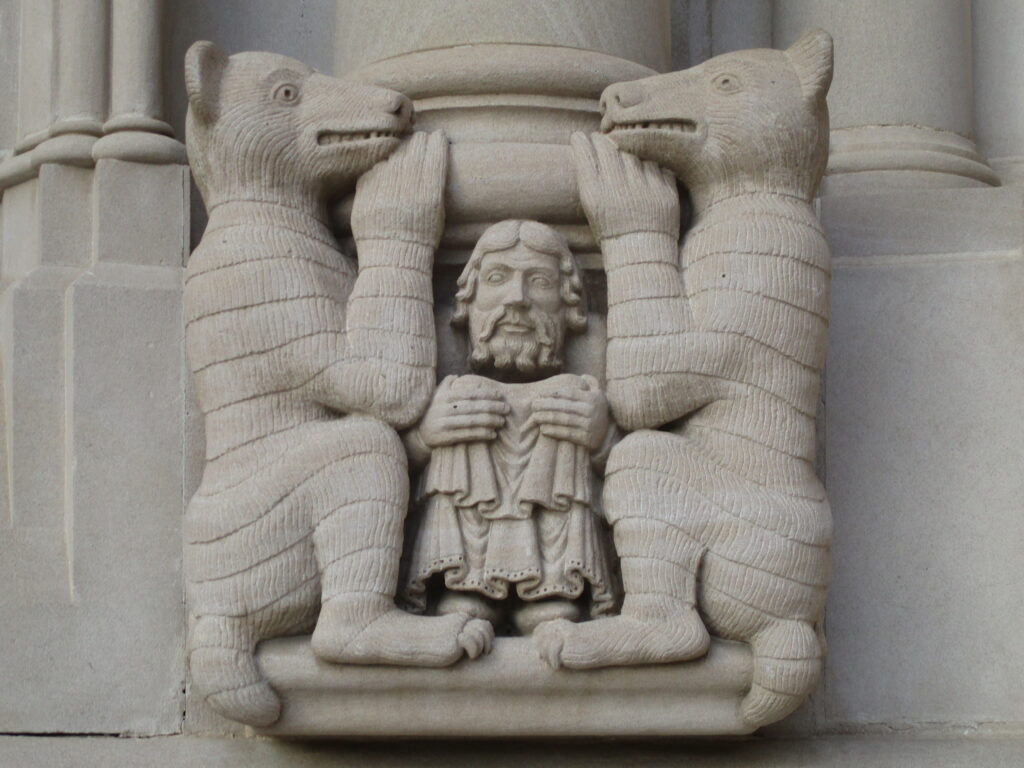
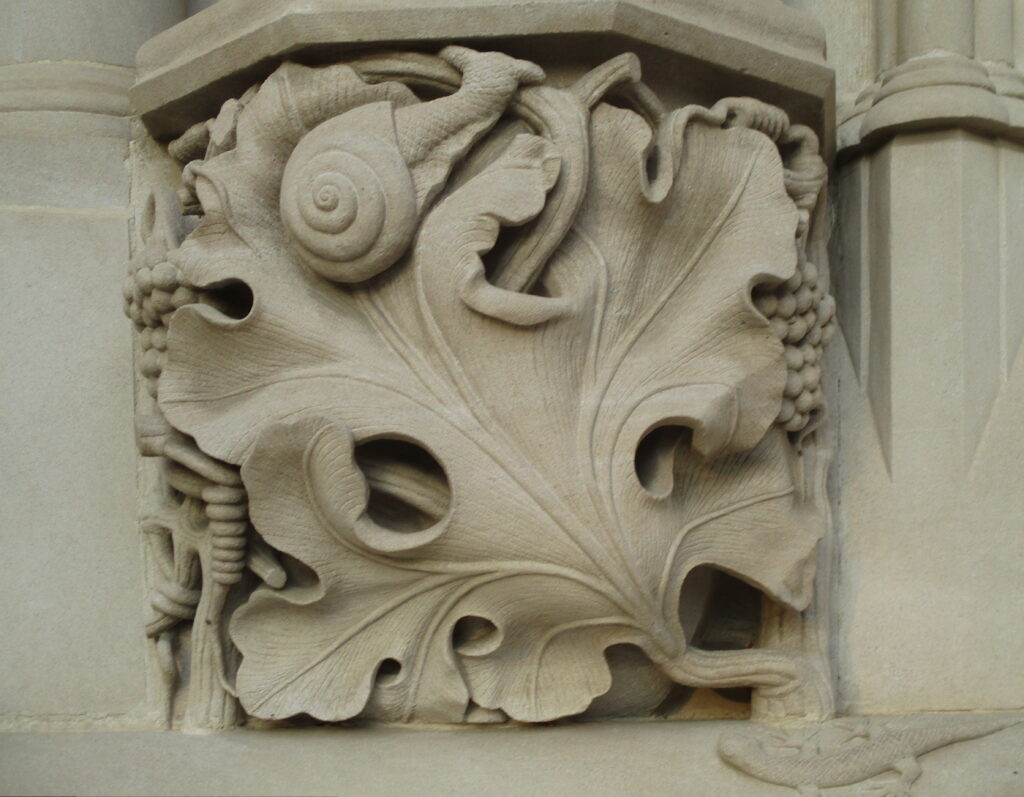
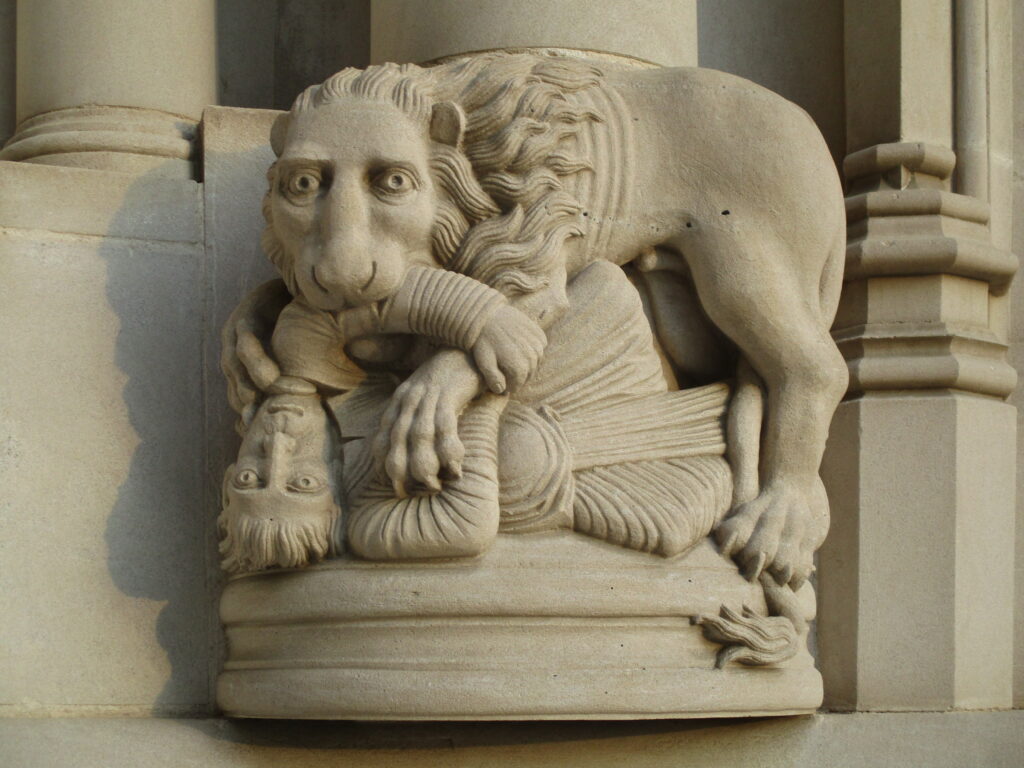
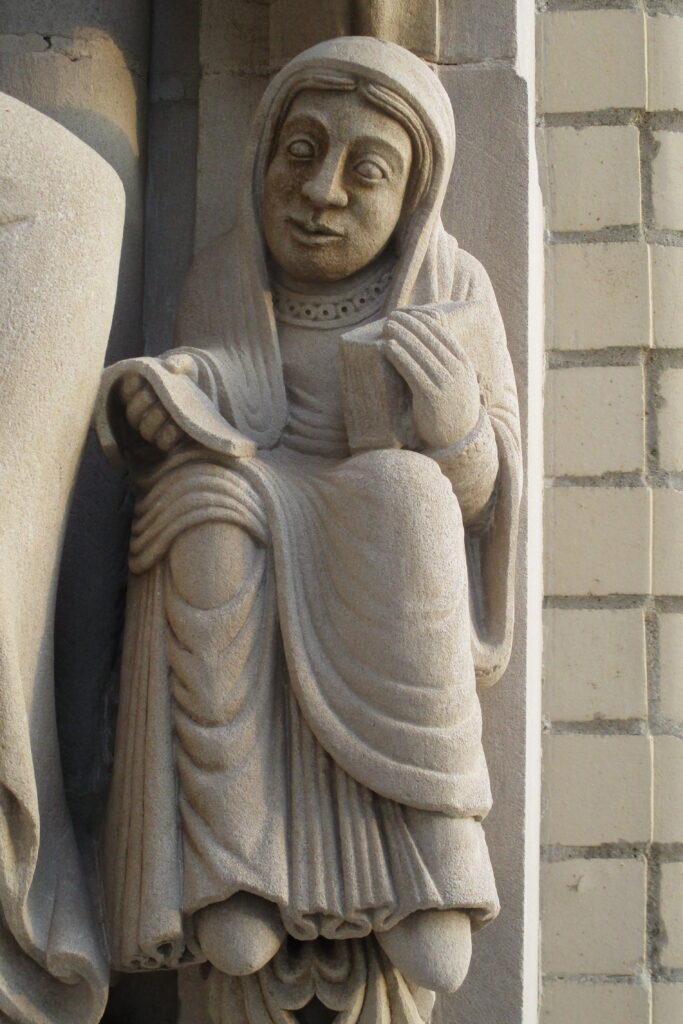
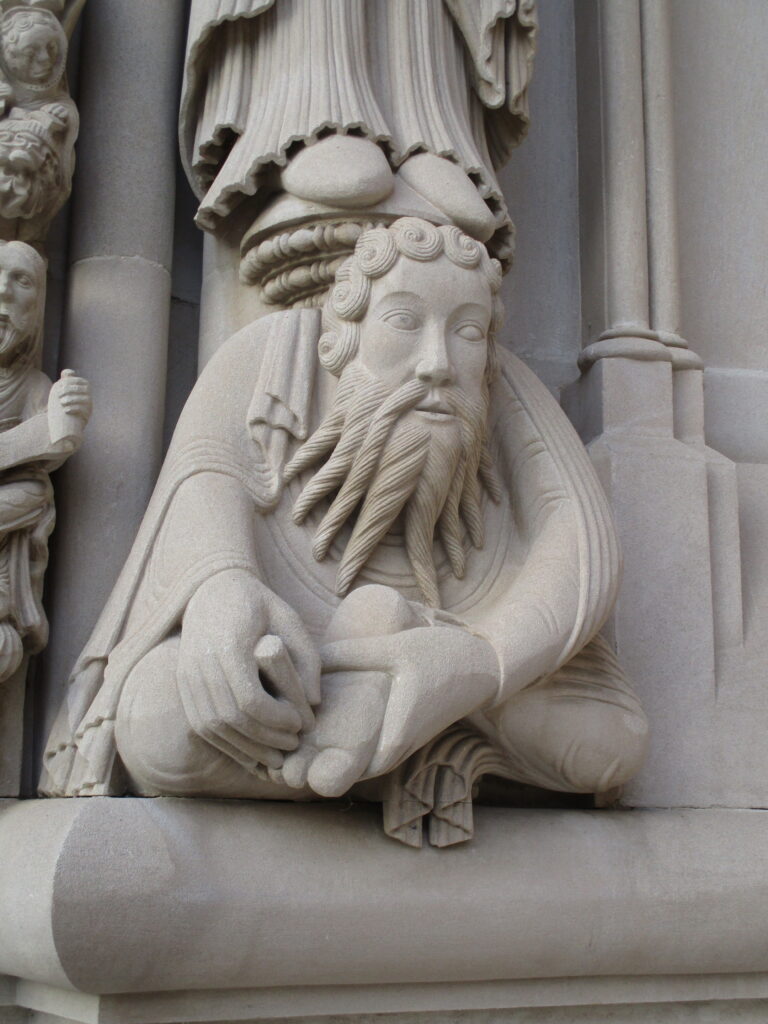
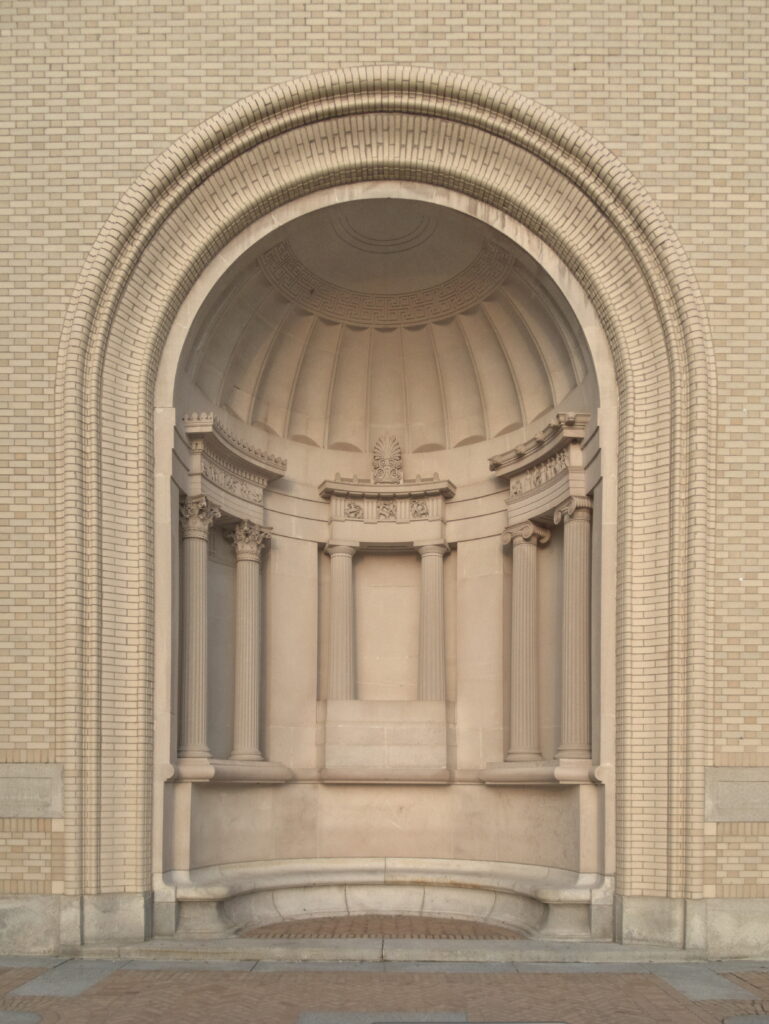
In the classical niche, the three orders of Greek architecture: Corinthian, Doric, Ionic, demonstrated with correct proportions.
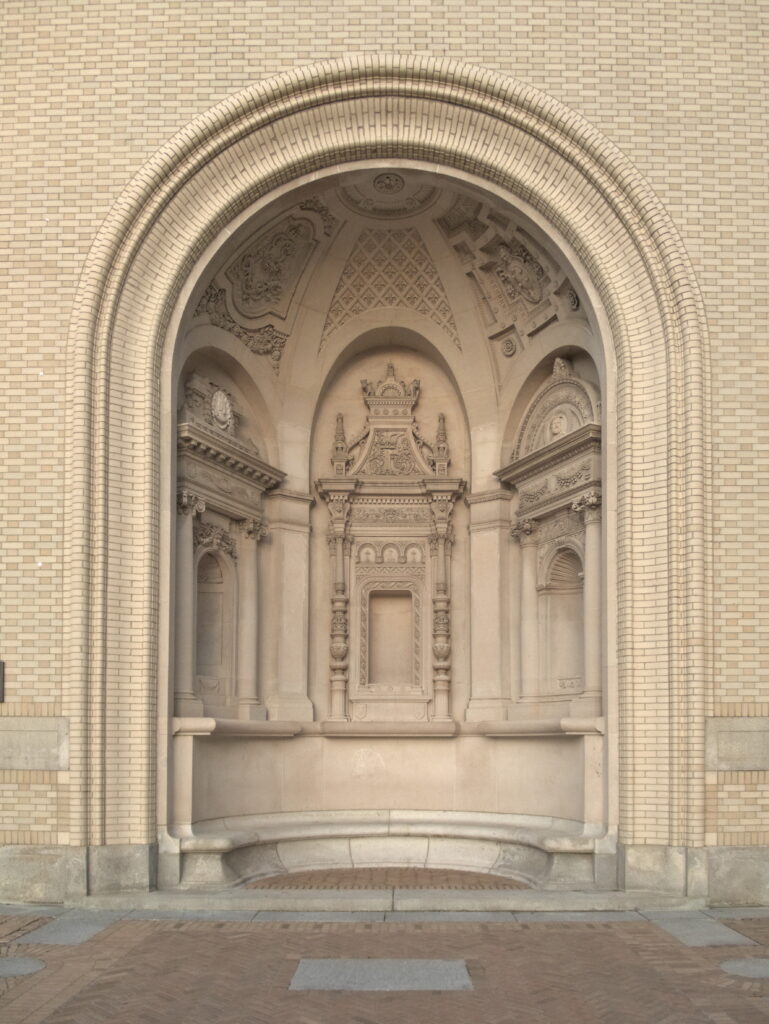
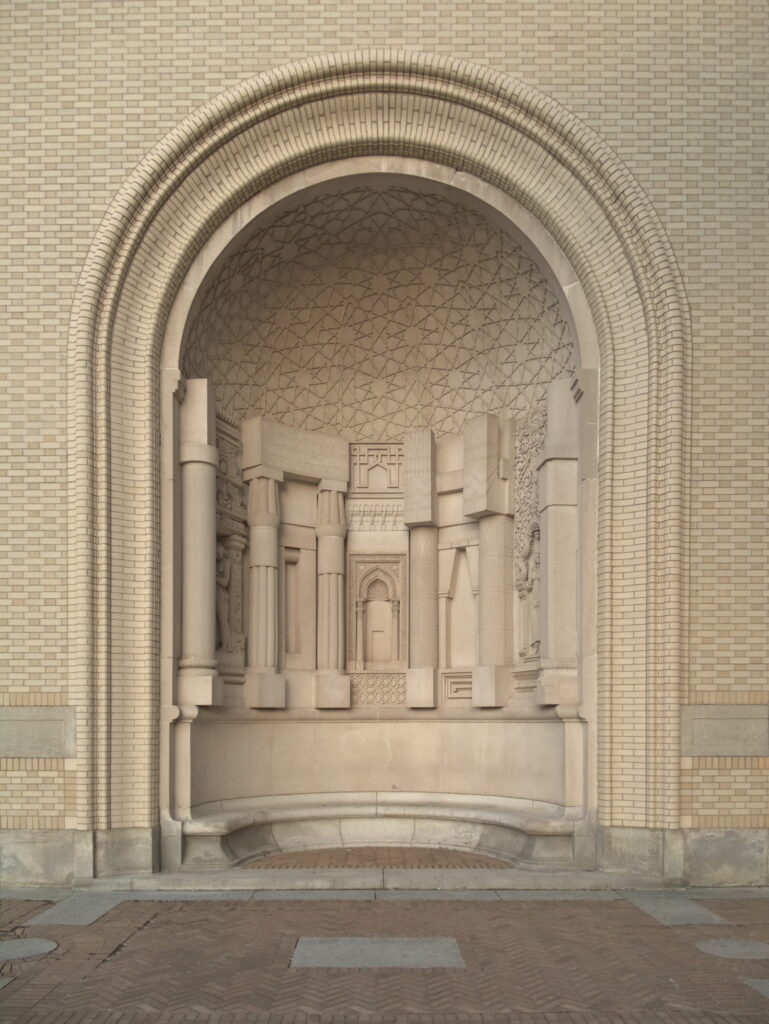

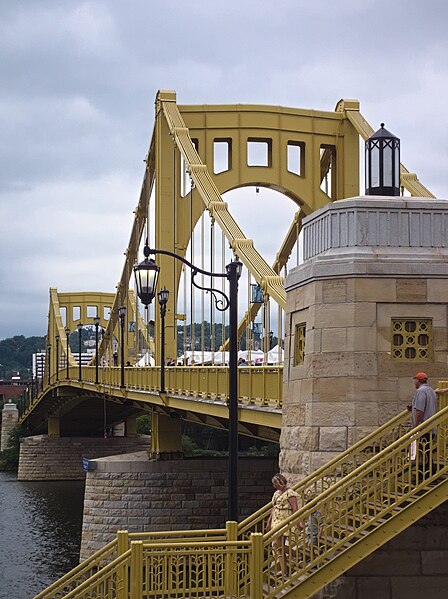
The Ninth Street Bridge, now named for our world-changing naturalist Rachel Carson, is the third of the Three Sisters going by street numbers, but it was the first to be built. Here we see it during the recent Three Rivers Arts Festival, when the artists’ market spilled outward across its entire length.

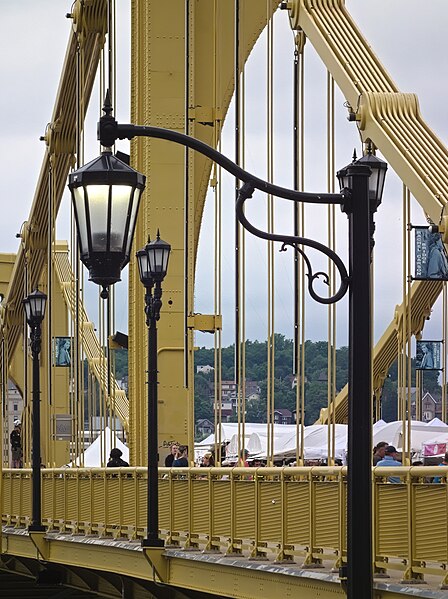

It is old Pa Pitt’s belief that every work of architecture or engineering ought to bear a permanent record of all the information a future historian will want.

This silent-era neighborhood movie palace has a circular history. It was built as the Olympic Theatre; when the theater closed, the building became an American Legion hall and remained in the Legion’s hands for decades; then it was converted to a nursing home. In 2019, a video-production company called Cut ‘N’ Run Productions (with an officially backwards apostrophe before the N about which old Pa Pitt can do nothing) spent a good bit of money making the building look like itself again, and it is once again in the movie business and looking splendid.
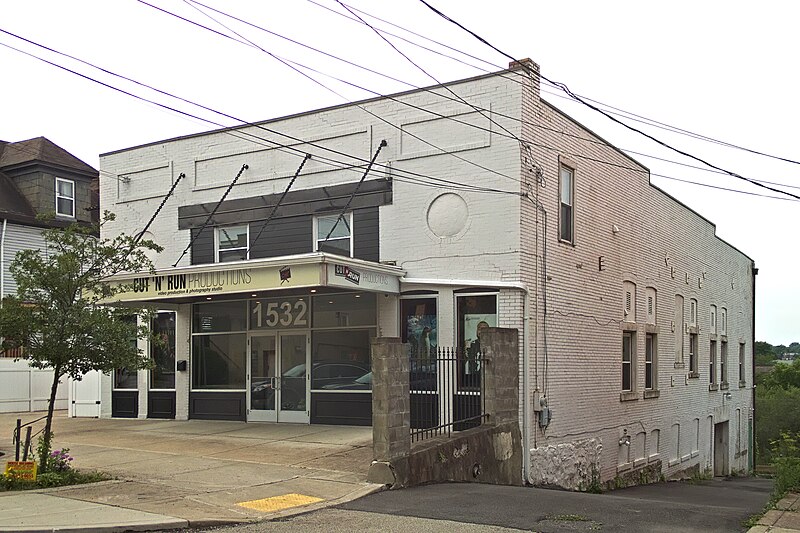
That little alley to the right of the theater is Parody Way, one of Father Pitt’s favorite alley names in Pittsburgh.
We also have a picture of the building in the middle of its restoration.

A Daniel Burnham masterpiece, fortunately preserved as luxury apartments (you have to go out back by the Dumpsters to catch a train). It was officially Union Station, but usually called Penn Station, since the railroads that were not owned by the Pennsylvania Railroad had their own separate stations.


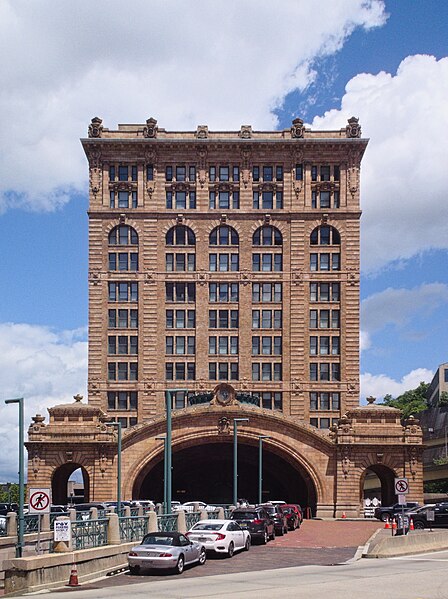


The East Busway runs right past the building on part of the original railroad right-of-way.
We also have some close-up pictures of the terra-cotta decorations on Penn Station.